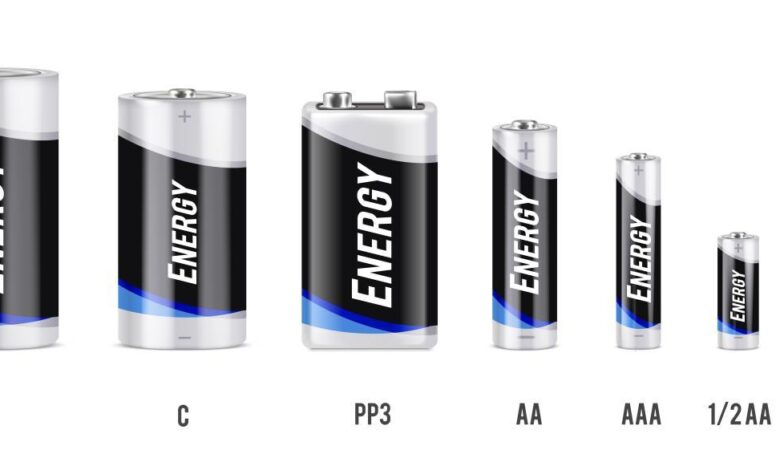Lipo Battery: Everything You Should Know

What is a Lipo Battery?
Lithium polymer batteries, sometimes abbreviated as LiPo, are a type of rechargeable battery that substitutes a polymer electrolyte for the liquid electrolyte present in traditional lithium-ion batteries. LiPo batteries are particularly helpful in applications where weight and space are critical, such as electric cars, drones, and mobile gadgets, because of their lighter weight and more flexible structure. LiPo batteries need to be carefully charged, discharged, and stored in order to guarantee their long lifespan. Hazards of fire or explosion might result from physical damage, overcharging, or overdischarging. Ersa Electronics provides all kinds of rechargeable batteries like Lithium-ion (Li-ion) Batteries, Nickel-Metal Hydride (NiMH) Batteries, Alkaline Rechargeable Batteries, and so on for your inquiry.
Key Features of Lipo Battery
Construction: A polymer barrier that contains the electrolyte in LiPo batteries facilitates the movement of lithium ions between the anode and cathode. Additionally, this barrier can be used as a safety feature by shutting off the battery in the event that it overheats during charging or discharging.
LiPo battery uses a range of chemistries, including lithium cobalt oxide and lithium iron phosphate. Each chemical offers a different amount of safety and energy density, opening up a wide range of applications.
Performance: LiPo batteries typically have a higher specific energy of 100–265 Wh/kg when compared to other rechargeable battery types. They may be produced in a range of shapes and sizes and have a low self-discharge rate to further boost their versatility.
Lipo Battery Applications
Often, LiPo batteries are utilized in:
Consumer electronics: These devices are commonly found in laptops, tablets, cellphones, and portable media players due to their tiny size and high energy density.
Hobby Equipment: Used to power radio-controlled (RC) vehicles, drones, and model airplanes. Their ability to produce high discharge rates makes them suitable for demanding applications.
Electric Vehicles: LiPo technology is used in some electric cars since it is lightweight and efficient.
LiPo batteries have advantages, but proper handling is required. Improper charging or discharging could become them volatile and result in fires or explosions. Appropriate charging and storage conditions are crucial for longevity and security.
Lipo Battery Charger
A LiPo (lithium polymer) battery charger is a specialized instrument used to correctly charge and maintain LiPo rechargeable batteries. The key characteristics of LiPo battery chargers are as follows:
Charge Modes: The most popular method for LiPo chargers is constant current/constant voltage, or CC/CV charging. They deliver a constant current initially, then switch to a constant voltage when the battery is almost fully charged.
Charge Current: The charge current, which is typically between 0.1 and 5 C (where C is the battery’s capacity), can be changed with LiPo chargers. Higher grade chargers are capable of handling charge rates of up to 10C.
Cell Balancing: LiPo chargers include integrated cell balancers to ensure that each cell in a multi-cell pack is charged equally. This prevents overcharging of individual cells.
Safety Features: LiPo chargers come with built-in safety features like reverse polarity protection, overcharge prevention, and automated charge termination when the battery reaches its maximum capacity.
Power Supply: LiPo chargers can get their power from the AC mains or from DC sources like car batteries. Higher power chargers require stronger DC power supply.
Compatibility: LiPo chargers (LiPo, LiFe, and LiIon) are designed for specific cell counts and battery chemistries. Using the wrong charger could damage the battery.
Cooling: Some LiPo chargers have built-in cooling fans to prevent overheating when charging at high current. LiPo battery charging should take place in a cool environment.
Use of the suitable LiPo charger is necessary to ensure that LiPo batteries are charged correctly and maintain their lifespan and performance. Following the manufacturer’s charging recommendations is essential to avoiding any potential fire hazards.
LiPo Battery Voltage Analysis
The nominal voltage of LiPo batteries is 3.7 volts per cell, just as that of many other lithium-ion batteries. Depending on the configuration, they can also be found in higher voltage ranges of 7.4 volts (two batteries in series) or 11.1 volts (three cells in series).
The number of LiPo cells directly affects the LiPo battery pack as well. Single-cell LiPo batteries discharge at 4.2V when fully charged and 3.0V when they are exhausted. Conversely, a two-cell 7.4V LiPo battery pack has a voltage range of 8.4V to 6.0V, respectively.
Since higher voltages put more strain on related electronic speed controllers and motors and lengthen their runtimes between charges, stronger ratings are needed.
Consequently, it’s imperative to confirm that a LiPo pack’s voltage matches the specified tolerance of any attached devices.
Lipo Battery Storage Voltage
LiPo (lithium polymer) batteries need to be stored at a specific voltage level to maintain their longevity and functionality. The recommended voltage range for LiPo battery storage is usually between 3.6V and 3.9V per cell, with 3.85V being a common goal.
Key Points on LiPo Battery Storage Voltage:
Storage Voltage Range: To reduce chemical deterioration and damage risk, LiPo battery voltages should be maintained between 3.6 and 3.9 volts per cell during prolonged storage.
Optimal Level: It is commonly mentioned that maintaining the health of batteries during storage requires a specific voltage of 3.85V per cell. This setting finds a middle ground between preventing over-voltage damage and the need to retain some charge.
Effect of Full Charge: LiPo batteries may experience capacity loss and increased internal resistance if they are kept at full charge (4.2V) for extended periods of time. This might significantly reduce the battery’s lifespan.
Discharge Before Storage: A used battery has to be promptly discharged back to the storage voltage in order to prevent degradation from occurring at a high charge level.
LiPo batteries exhibit a relatively low self-discharge rate; but, if stored in close proximity to 3.5V, they may progressively lose voltage and ultimately drop below the vital 3.0V barrier, potentially leading to damage.
By adhering to these storage voltage guidelines, you may help your LiPo batteries last longer and remain safe.
LiPo Battery Minimum Voltage
LiPo (lithium polymer) batteries are known to require a minimum of 3.0 volts per cell. Reducing the voltage when the battery is being discharged could put stress on its electrochemical processes and ultimately lead to a decline in performance.
Key Points on LiPo Battery Minimum Voltage:
Absolute Minimum: A LiPo cell should be discharged at the lowest possible voltage, which is 3.0V. The battery could suffer irreversible damage below this threshold.
Suggested Cutoff Voltage: To increase longevity and decrease wear, it is usually recommended to choose a cutoff voltage of roughly 3.2V to 3.3V per cell for non-critical applications. This increases the likelihood that the battery will withstand multiple charging cycles.
Impact on Performance: When the voltage drops below roughly 3.5V, users may noticeably notice a decline in performance. Additionally, the battery’s internal resistance may increase, decreasing its efficiency.
Storage Voltage: 3.85V to 3.9V per cell is the recommended range for long-term storage of LiPo batteries, with 3.6V to 3.9V being the best range.
LiPo Battery Maximum Voltage
LiPo (lithium polymer) batteries have a maximum voltage of 4.2 volts per cell when fully charged. A battery that is overvoltaged may have a reduced lifespan and pose safety hazards.
Important Information about LiPo Battery Maximum Voltage:
Fully Charged Voltage: Each LiPo cell reaches its maximum voltage of 4.2V when fully charged. A multi-cell pack’s total voltage is determined by multiplying the number of cells by 4.2V, so a 3S pack would have an overall voltage of 12.6V.
Risks Associated with Overcharging: Charging a battery above 4.2V may significantly shorten its life and may cause a protective circuit to trip, stopping the charging process to prevent damage. Up to 4.25V is the maximum rating that specialty high-drain cells can have, however handling and the right chargers are required.
Effect on Cycle Life: Constantly charging at maximum voltage may shorten the battery’s lifespan and cause it to finally run out of capacity.
Charging Procedures: It is essential to use a charger designed specifically for LiPo batteries in order to guarantee a safe and effective charge. Constant current/constant voltage, or CC/CV, is the method used by these chargers.
3S vs. 2S vs. 4S vs. 6S Lipo Battery Voltage
Every design provides different voltage levels suitable for different uses:
Because 2S batteries have a lower voltage and weight, they are frequently employed in smaller, less demanding applications.
Because they provide a good mix of weight and power, 3S batteries are often used in RC cars and drones.
For more power-demanding applications, such as larger RC models and high-performance drones, 4S batteries offer a greater voltage.
Larger drones and electric airplanes, among other applications requiring significant power output, employ 6S batteries because of their much greater voltage.
Understanding these voltage characteristics is critical to selecting the appropriate battery for your needs, ensuring that your device will work with it, and optimizing performance all the while adhering to safety standards.
How to Charge a Lipo Battery With Low Voltage?
Charging a LiPo battery with low voltage requires careful handling to avoid damaging the battery or creating safety hazards. Here’s a step-by-step guide based on the information gathered:
Steps to Charge a Low Voltage LiPo Battery
- Check Voltage Levels: Determine the voltage of each cell in the LiPo battery. If any cell is below 3.0V, special precautions are necessary, as charging below this level can be risky.
- Select the Right Charger Setting:
If the voltage is below 3.0V per cell, many smart chargers will not allow charging due to safety features. In this case, switch your charger to NiMH or NiCad mode. This setting allows you to charge at a lower and safer rate.
Set the charge current to a very low rate, typically between 0.05A and 0.1A (or 1/20C to 1/10C of the battery’s capacity). For example, for a 1300mAh battery, this would be 0.065A or 0.13A.
- Begin Charging:
Connect the battery to the charger without the balance lead initially.
Start charging in NiMH mode until the voltage of each cell rises above 3.0V. Monitor the charging process closely to ensure there are no signs of swelling or overheating.
- Switch Back to LiPo Mode:
Once the cells reach about 3.2V to 3.5V, stop charging and switch your charger back to LiPo mode.
Reconnect the balance lead and perform a balance charge at a safe rate (ideally at 1C or lower) to bring the cells up to full voltage (4.2V per cell).
- Monitor During Charging: Throughout the entire process, keep an eye on the battery for any unusual signs, such as excessive heat or swelling. Never leave the battery unattended while charging.
- Post-Charging Care: After charging, allow the battery to cool down before use and store it at a safe voltage (around 3.8V per cell) if not used immediately.
FAQs About Lipo Battery
What is a LiPo battery?
LiPo (Lithium Polymer) batteries are rechargeable batteries that use a polymer electrolyte instead of a liquid electrolyte. Their well-known characteristics include their lightweight design, high energy density, and shape flexibility.
How is a LiPo battery charged?
To charge a LiPo battery, use a charger designed specifically for LiPo batteries. Verify that the charge current is within the recommended range, which is often 1C or less, then adjust the charger to the appropriate cell count (2S, 3S, etc.). Always monitor the charging process and use balancing charging to ensure consistent voltage across all cells.
What is the highest voltage at which LiPo batteries may be charged?
The maximum charging voltage for LiPo batteries is typically 4.2 volts per cell. Overvoltage can cause safety concerns as well as battery degeneration.
If the voltage on my LiPo battery is low, what should I do?
If the voltage of your LiPo battery falls to less than 3.0 volts per cell, you may need to take extra care of it. Use a charger that can safely bring the gadget’s voltage down to a safe level; ideally, it should begin with a low current setting.
How should LiPo batteries be stored?
LiPo batteries should be stored between 3.8 and 3.85 volts per cell to maximize their lifespan. It is best to keep them somewhere dry and cool and in bags or containers that can withstand fire.
What safety measures are recommended when using LiPo batteries?
LiPo batteries should always be charged in a fireproof bag or container and should never be dropped or punctured. Watch the temperature during charging, and avoid dropping the voltage below recommended levels or overcharging.
What is the lifespan of LiPo batteries?
The lifespan of a LiPo battery typically ranges from 300 to 500 charge cycles. Depending on usage patterns and maintenance practices. They can live much longer if given the right care.
Can I charge my LiPo battery with any charger?
No, you should only use chargers designed specifically for LiPo batteries. These chargers’ integrated functions ensure safe cell balancing and charging.
What occurs when a LiPo battery is overcharged?
Overcharging a LiPo battery can result in thermal runaway, which can cause overheating, swelling, fire, and explosion. Keep a vigilant watch on the charging process to prevent this.
When is my LiPo battery fully charged, and how can I tell?
A fully charged LiPo battery has a voltage of 4.2 volts per cell. A lot of modern chargers use visual indicators or audible alerts to notify you when the charging process is complete.





